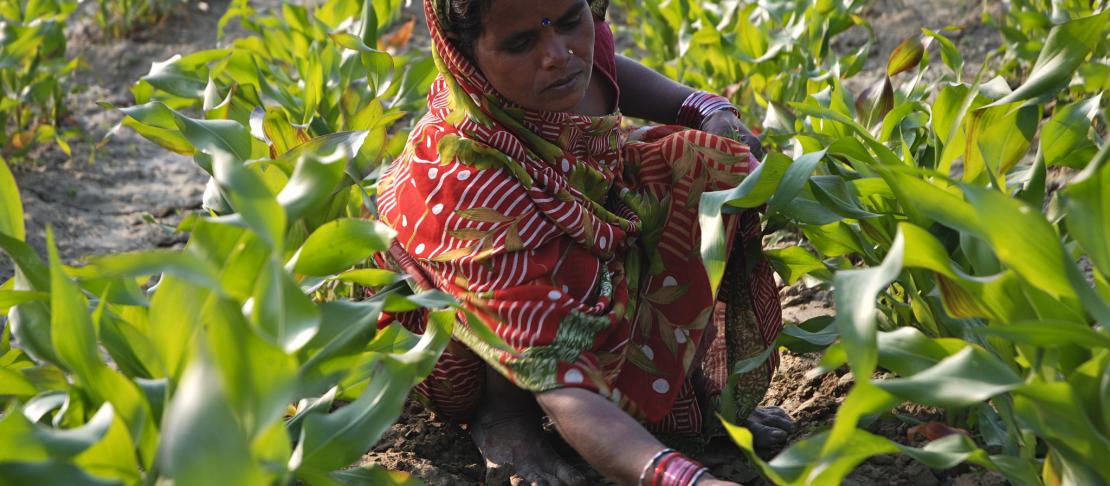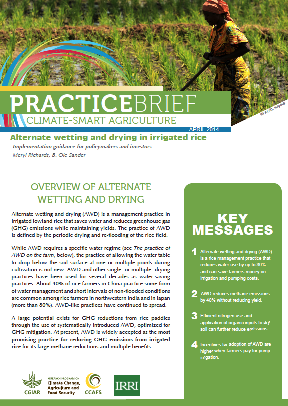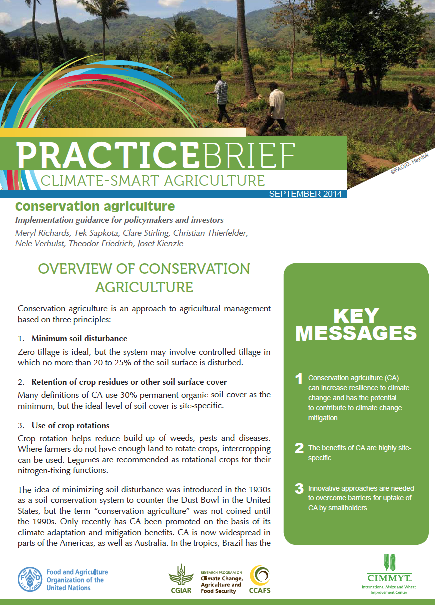Growing evidence for climate-smart agriculture

Climate-smart agriculture (CSA) practice briefs provide policy makers and extension agents with guidance on increasing food security and mitigating climate change form agriculture.
Governments, agriculture partners and investors require location-specific, socially astute scientific evidence to develop and support agricultural growth strategies that can support food security while integrating climate change adaptation and mitigation co-benefits.
The CGIAR Research Program on Climate Change, Agriculture and Food Security, (CCAFS), the Food and Agriculture Organization of the United Nation (FAO), and our research partners are providing evidence – including data, social-economic analysis, and field-level implementation guidance – in a series of briefs that support the goals of the CSA Alliance. Climate-smart agriculture (CSA) practice briefs present yield and emissions data based on field trials and adoption techniques by location, providing policy makers and extension agents with guidance for how specific CSA practices can increase food security and mitigate climate change form agriculture.
Two practice briefs are now available.
Alternate wetting and drying in irrigated rice
AWD is the agricultural practice in which the water table is allowed to drop below the soil surface at one or multiple points during cultivation of irrigated rice. AWD offers reduced water use and increased net return for farmers. AWD also decreases methane emissions from irrigated rice by 48%, prompting demand for immediate scale up. Authors find that successful implementation of AWD requires well-functioning irrigation systems, proper technology transfer and education, and co-ownership, and they offer suggestions for policy development and funding.
Authors from CCAFS, the International Maize and Wheat Improvement Center (CIMMYT), and FAO agree that CA most often offers stable yields, drought buffering, reduced field preparation costs and reduced soil erosion – all critical to small farmers facing changing growing conditions. The authors caution that CA cannot be seen as a short-term fix, as soil type, rainfall, and farmer knowledge and commitment influence CA’s impact. In certain situations, CA can mitigate climate change by accumulating carbon in soil, though researchers found that the mitigation potential is more limited than had been estimated previously.
Look for CSA Practice Briefs on nutrient management and brachiaria coming soon.
Julianna White is the Program Manager for Low-Emissions Agriculture at the CGIAR Research Program on Climate Change, Agriculture and Food Security (CCAFS) at theUniversity of Vermont.
This post is part of a series related to Climate-Smart Agriculture at the UN Climate Summit. Get a full rundown of Climate-Smart Agriculture events at Climate Week NYC and follow updates on our blog and via twitter @cgiarclimate. Learn more about Climate-Smart Agriculture and Climate-Smart Villages.





